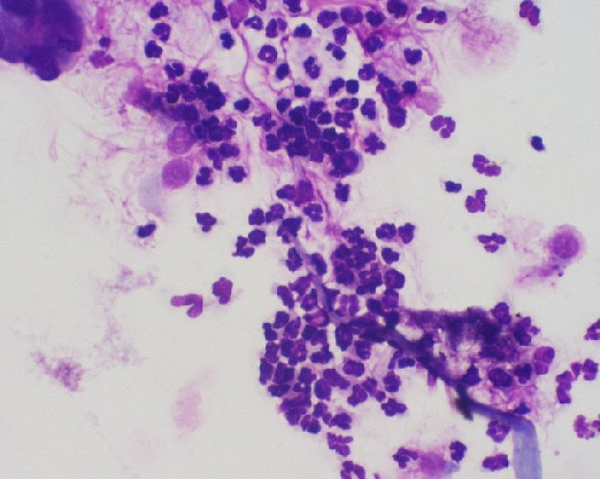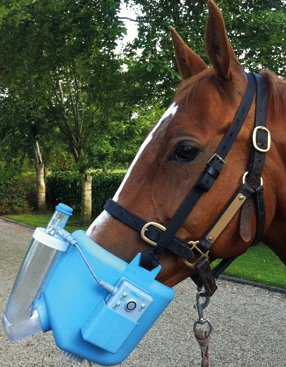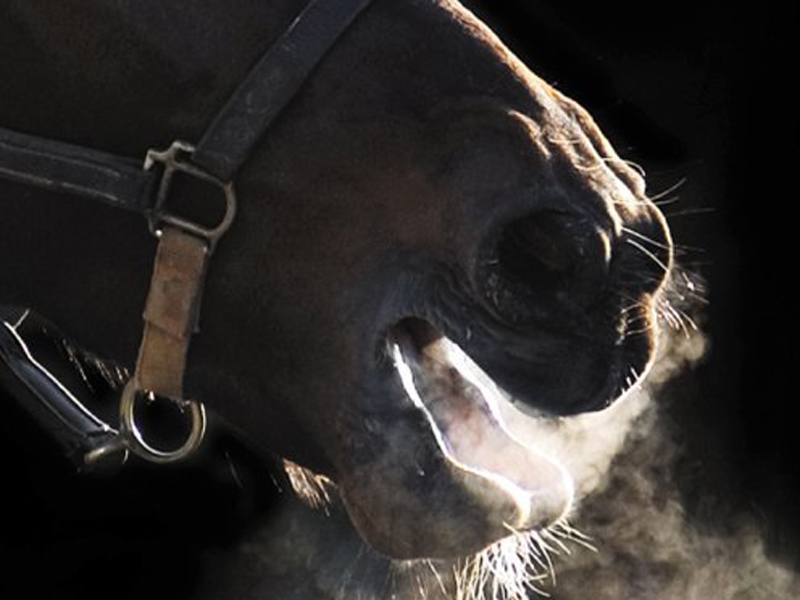Respiratory disease is a common cause of poor performance in racehorses, and elite performance horses. Importantly, there has been a recent change to the way we describe conditions relating to inflammation of the lower airways specifically. “Equine Asthma” is now used as a broad term to describe inflammatory conditions of the lower airways, and replaces several previously termed conditions.
Mild to moderate equine asthma was previously called “inflammatory airway disease”. Other terms such as “Recurrent airway obstruction”, which is equivalent to severe equine asthma, and “Summer pasture associated asthma” are old terms that are now described as Equine Asthma of varying serverities. Mild to moderate equine asthma is very common in both thoroughbred and standardbred racing horses, as well housed/stabled horses more generally, and if often triggered by allergic responses to environmental allergens.
The damage that often occurs during this disease process may include:
- constriction of the airways,
- thickening of the airway walls,
- increased mucous secretion,
- remodelling of the airway structures.
These changes to the airways make it much harder for horses to get sufficient air into and out of their lungs which reduces performance. It can also predispose horse to Exercise Induced Pulmonary Haemorrhage (EIPH). Mild to moderate asthma can be hard to detect.
Equine asthma is often caused by substances that trigger an allergic response. Horses housed in conventional stables with high levels of airborne particles (dust, pollen, fungi, molds, ultrafine particles and noxious gases such as ammonia (from urine) are more at risk of developing this type of asthma. Dust from feed is also a major source of allergens.

Inflammatory cells from a BAL examined under a microscope

Diagnosis
The main presenting sign of mild Equine Asthma can be just a slower recovery following exercise, or some horses may cough sporadically during or after work. Observing excessive mucous during endoscopic (Scope) exam of the horse’s airways in the absence of other abnormalities such as increased resting temperature is highly suggestive of equine asthma.
A Bronchoalveolar lavage (BAL) is necessary for definitive diagnosis of equine asthma. BAL involves administering some sterile saline into the lower airway and then drawing back the fluid and collecting into sterile pots. The samples are then examined under a microscope for inflammatory cells. The cells in the fluid collected during the BAL inform the veterinarian what sort of inflammation is present and the severity of the condition. Culture of fluid may also be conducted if bacterial infection is considered likely. Allergic equine asthma is diagnosed in the absence of bacterial or viral infection.
Treatment and ongoing management
Treating equine asthma is challenging and a conscientious effort to reduce the exposure to allergens is required. The first step is to optimise air hygiene around the horse. If stabling is unavoidable, then the stable must have effective and continuous ventilation – fans or similar may be necessary to get sufficient turnover of air. Low dust bedding (e.g. wood shavings, paper, shredded cardboard, pelleted material) and low dust feed (haylage, pelleted or cubed forage) should be used.
Soaking hay does reduce some dust but is not very effective in reducing exposure to allergens. Ammonia from urine soaked bedding can have deleterious effects on protective inflammatory cells within the lungs so cleaning out the stable regularly will also help reduce the inflammatory process.
There is no evidence that antimicrobials (in the absence of significant bacteria in the BAL) improve mild to moderate equine asthma. Although in severe cases, anitmicrobials may be presribed by your vet to avoid horses developing a more serious bacterial respiratory infection. Treatment with anti-inflammatory drugs (systemic or through a nebulizer or spacer) is an effective treatment option. Supplementing the diet with polyunsaturated omega-3 fatty acids is also known to aid the respiratory immune defences. Prevention as always is better than cure, so aiming for good air quality and reduced dust in the environment around your horses may decreaese the liklhood of horses suffering for equine asthma.

